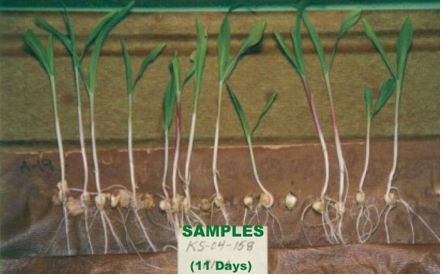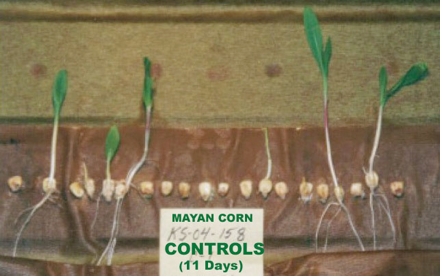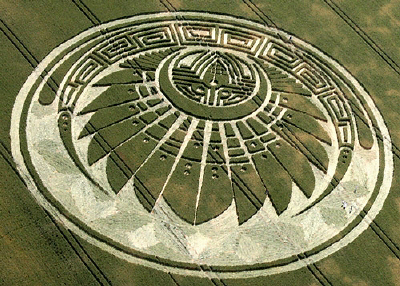Comments Regarding
If Simeon Hein's purpose in his recent posting (below) is an attempt to compare this 2009 "test" of three UK crop formations to germination results published by the BLT Research Team in the 1990s he has apparently failed to understand that original work. He does not follow the protocol consistently carried out (and published) by W.C. Levengood (1994) and by W.C. Levengood and Nancy Talbott (1999) (see: http://www.bltresearch.com/published.php), and he also mis-reports his own results. Critical details not covered by Hein include:  MIR-treated Samples. Photo: W.C. Levengood.  MIR controls. Photo: W.C. Levengood Although the above case is an extreme example, multiple trials with a wide variety of seeds exposed to these "ion avalanches" consistently produced faster germination and greater yield in the plants which were grown to harvest, as well as causing increased tolerance to typical plant "stressors" (lack of adequate sunlight and/or water). These results clearly confirm Levengood's hypothesis that an energy system which includes these unusual electrical pulses is involved in the creation of genuine crop circles-at least those which occur late in the season. Hein states that his tests do not support the idea that crop circles (I think he means, here, that the energies thought to be involved in the creation of crop circles) uniformly increase seed germination rates. One of his problems, here, is that no research has ever (so far as I am aware) indicated that seeds taken from all crop circles will germinate more quickly than their control seeds. The research which has been conducted by the BLT Research Team, and published in the peer-reviewed journals above, revealed that seeds taken from crop circles which occur in mature crop, late in the growing season -- crop in which the seed is fully formed at the time the crop circle occurs -- regularly showed increased seed germination (at a rate of up to 5 times that of the controls). [For summary and photos, see items #5(d) and #7 in the Plant Abnormalities section of the BLT web-site: http://www.bltresearch.com/plantab.php.] Dr. Hein states that he has a degree in sociology -- not in one of the "hard" sciences such as biology or another of the other plant sciences. I suggest his energies might be more productively applied in the arena of the social sciences. http://newcrystalmind.com Import Variables: Seeds that are laid on the ground of crop formations are subject to different amounts of sunlight than that of standing crops, more contact with moisture, and more trampling from crop visitors. Any or all of these variables might have an effect on germination rates. The shape and energies of the crop circles itself may also play a role in affecting the germinating seeds. Analysis: Because of the small sample sizes of around 100 seeds per test, we can't be highly confident in the results. In the Martinsell formation, the seeds from outside the formation germinated better. In the Waden Hill formation, the crop circle formation seeds germinated better than the control seeds. And in the Silbury Hill formation, there was not much difference. From these results, we can't make any real conclusions as to whether crop circles increase or decrease germination rates. To increase our statistical confidence we would need larger seeds samples, about 400 per sample, and more crop circles. We can say, however, that our tests, so far, do not support the idea, commonly heard in some parts of the crop circle research community, that crop circles uniformly increase seed germination rates from seeds inside these formations. More tests are needed to make a clear determination about this phenomena and to see if there is any uniform effect one way or another." |
